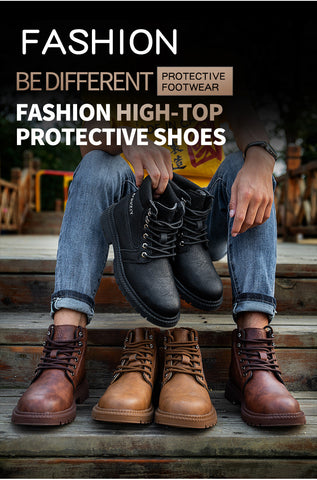What kind of work shoes do construction workers and cement workers choose
Construction work is a dangerous and labor-intensive industry, and workers rely on protective equipment and apparel to ensure their safety on the job. One of the most important pieces of apparel is the work shoe, and workers in the construction industry have several shoe styles from which to choose. In order to ensure their safety and comfort, construction workers must select appropriately rated shoes to protect their feet from injury and to keep them comfortable on the job.

When choosing a work shoe for a construction setting, the first priority should be durability and comfort. Durability is especially important for construction workers because of the often rough conditions in which they will be working. Heavy-duty shoes are specifically designed to provide increased durability, going above and beyond what a traditional sneaker can provide. These types of shoes tend to feature additional support, such as reinforced toes and heavy-duty material. Many styles also feature slip-resistant treads to provide improved traction on slippery surfaces or to protect against falls.
In addition to durability, comfort is also essential to consider. When outfitted with lightweight materials, the right pair of work shoes can provide both the necessary support and cushioning to keep workers comfortable throughout the day. Construction workers should look for shoes with ample cushioning in the heel and sole, as well as supportive features such as arch support. Good breathability is also important for workers who may find themselves in hot, sweaty conditions; waterproof materials should offer some protection from moisture and odors.

When selecting a work shoe for a construction setting, it is essential to pay attention to the safety ratings. The most important rating is the footwear’s impact resistance, which measures how well the shoe can protect the foot from falling objects, electrical shock, and other potential hazards. Many of the leading work-shoe brands are designed with sturdy toes, heavy-duty construction materials, and slip-resistant grip to provide protection against the various risks that face construction workers.
By selecting a safe, comfortable, and durable work shoe appropriate for the task, construction workers can reduce their risk of injury and stay comfortable on the job. When shopping for a work shoe for a construction setting, consider the shoe ratings, durability and comfort features, breathability, and slip-resistance to make the best selection for your needs.

Cement worker safety
Worker safety is a critical concern in the cement industry due to the various hazards posed by dust, noise, and other harmful elements. In order to ensure the safety of its employees, cement manufacturers must provide adequate and up to date safety equipment, clear safety protocols, and frequent training.

The most common and immediate risk for cement workers is exposure to silica dust. When grinded, drieds, or in contact with air, cement releases crystallized silica. This substance is found in many masonry and construction materials, but prolonged exposure can cause serious respiratory and cardiovascular illnesses, including death. To combat this, safety measures such as respirators and face masks should be provided to exposed workers and adequate ventilation should be part of cement manufacturing areas. In addition, wetting, or spraying the cement with water to keep the dust down, should be done regularly.

Apart from silica dangers, other hazardous elements present in manufacture and grinding plants include noise, vibration, and chemicals and particulates found in cement. Protective hearing equipment, such as ear muffs or plugs should be worn in noisy machines or facilities, while vibration dampening devices should be used with equipment that causes vibration or shake. Additionally, workers should be equipped with protective clothing when exposed to these elements, as well as regular safety checks on materials and products to eliminate any unseen dangers.

Finally, proper training and instruction are essential to keep workers safe in potentially dangerous environments. Regular instructor-led health and safety training should be provided for all workers in the process, including topics such as personal protective equipment, accident prevention, and hazard recognition. Moreover, management should actively encourage safety practices and implement safety warnings during pauses in production or other breaks in the manufacturing process.

In conclusion, cement workers should be provided with adequate safety equipment, clear safety protocols and frequent training to create an environment that is safe yet still conducive to production. With these measures in place, accidents in the industry will be greatly reduced, saving lives and protecting the health and safety of employees.
